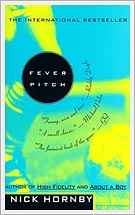 Yesterday at Book Off I somewhat fortuitously — for I hadn’t even noticed the “foreign books” shelves until I was in the checkout line — picked up for 100 yen an old (2 years ago) edition of The New Yorker — the “Winter Fiction” edition. My commute is a series of short train rides not really conducive to anything more than staring out the various windows — not a bad thing of course, but I’m getting to the point where new visual discoveries are infrequent. As a consequence of my commuting pattern, my reading activity has gone way down. I thought this winter fiction would be sufficiently bite-sized to fill the reading void a bit.
Yesterday at Book Off I somewhat fortuitously — for I hadn’t even noticed the “foreign books” shelves until I was in the checkout line — picked up for 100 yen an old (2 years ago) edition of The New Yorker — the “Winter Fiction” edition. My commute is a series of short train rides not really conducive to anything more than staring out the various windows — not a bad thing of course, but I’m getting to the point where new visual discoveries are infrequent. As a consequence of my commuting pattern, my reading activity has gone way down. I thought this winter fiction would be sufficiently bite-sized to fill the reading void a bit.
On the way to work I read “The Bible” by Marguerite Duras. I don’t have much intelligent to say about the story itself except that I liked it, and I marveled that I could feel as if I knew the female character completely in the space of two pages (the male character less so, but he was more a symbol of something, a foil for a shoe store clerk). I mentally dragged my highlighting pen over this passage:
In a sense, she was lucky; she told herself that she learned things when she was with him. But those things brought her no pleasure. It was as if she had already known them, so small was her need to learn them.
But more than the story itself I found myself thinking about the short story, and how much I love the form. Short stories are like traveling on a puddle-jumping airplane: when the journey is over, you think “wow that was quick” but all the same, you are in a different place than when you started.
Short stories appeal to my sense that it is impossible to tell the whole story, so why even try.
On the way home I read (or rather started — I finished it at home) “My Father’s Suitcase,” by Orhan Pamuk, the Turkish novelist. This isn’t a short story but rather the text of a 2006 Nobel Lecture (available online here). Though a speech, it reads like an essay — another beloved form.
This piece is wonderful and beautiful in so many nuanced ways — about father and son, and about writing, and books. A paragraph toward the end about why he writes, too long to quote in full here, could easily stand in for my own sentiments, with the change of a few words here and there:
I write to be alone. Perhaps I write because I hope to understand why I am so very, very angry at all of you, so very, very angry at everyone….I write not to tell a story, but to compose a story. I write because I wish to escape from the foreboding that there is a place I must go but – just as in a dream – I can’t quite get there. I write because I have never managed to be happy. I write to be happy.
Earlier, Pamuk writes about journeys and traveling:
The writer who shuts himself up in a room and first goes on a journey inside himself will, over the years, discover literature’s eternal rule: he must have the artistry to tell his own stories as if they were other people’s stories, and to tell other people’s stories as if they were his own, for this is what literature is. But we must first travel through other people’s stories and books.
Physically I traveled there and back. My material self was grateful for the security of the home I left in the morning and returned to in the evening, and for the salary earned in between.
Spiritually I got on a one-way train this morning and for this I’m grateful to the writers in question, and for coming to them via an American magazine found in a Japanese bookstore and costing less than a dollar.


 I bought David Sedaris’
I bought David Sedaris’